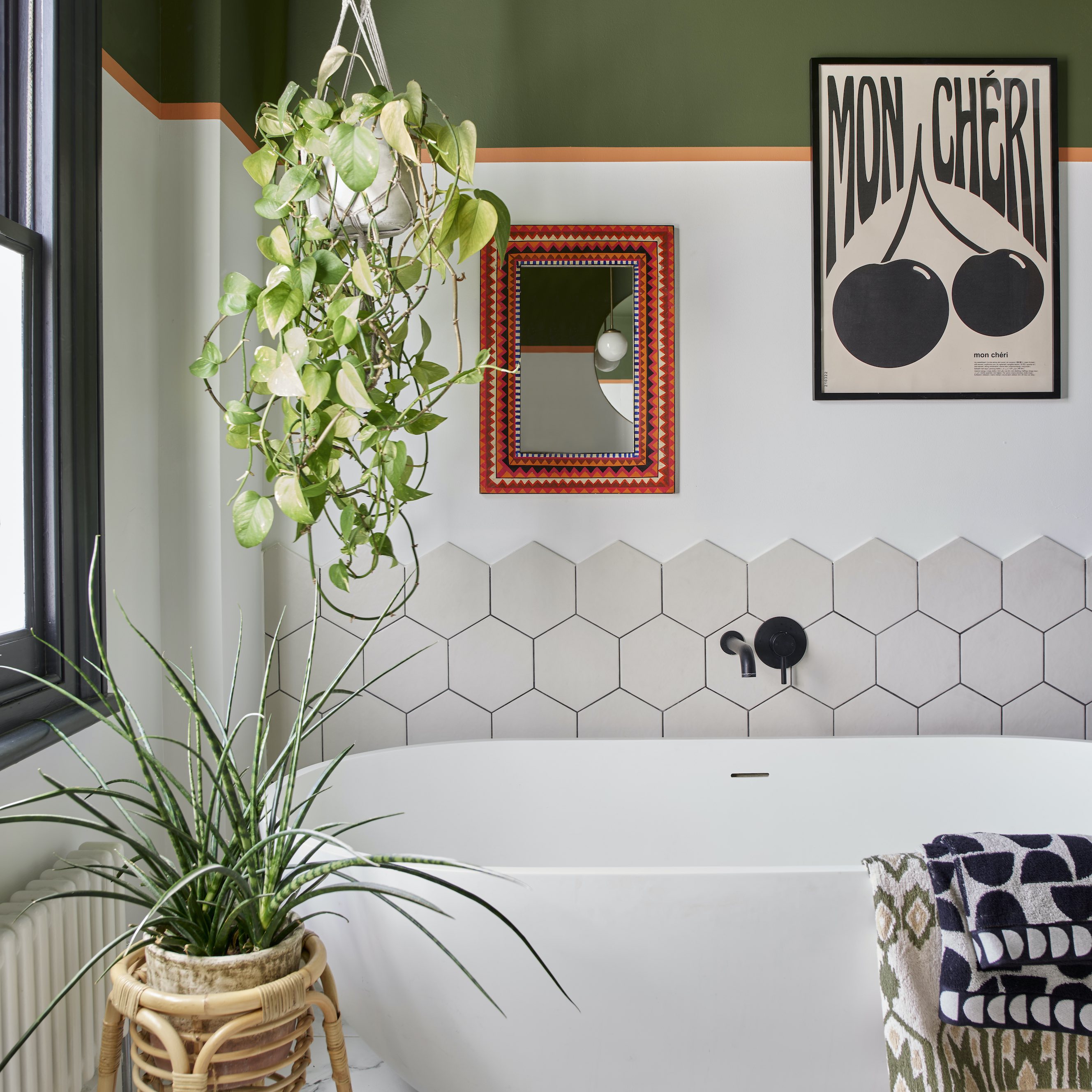
With the average new bathroom costing between £5,000-£10,000, according to mybuilder.com, renovating your bathroom isn’t a project you’ll want to splash out on too often. Learning how to save on a new bathroom can help your budget go further, leaving you more cash for other rooms that need attention.
Compared to living rooms or bedrooms, bathrooms are one of the more expensive rooms in the home to revamp, not least because bathroom renovation ideas require more specialists like plumbers and tilers to get the job done. You shouldn’t need building consent or planning permission to replace an existing bathroom, but if you’re building a new one from scratch, you may well have extra bills from the Council to consider, too.
That’s why we’ve compiled our top 10 tips for bringing that luxury look and feel to your bathroom, without needing to rob a bank to make your next mortgage payment. Some may be more obvious than others, but each one will make a difference to your bathroom spending.
How to save on a new bathroom
If you follow our expert advice on ways to spend wisely, you should end up with a stylish bathroom that doesn’t make you weep at the thought of your credit card bill every time you turn on the shower. You may even have something left in the pot for a small (camping) holiday this year. No promises!
1. Repurpose existing furniture
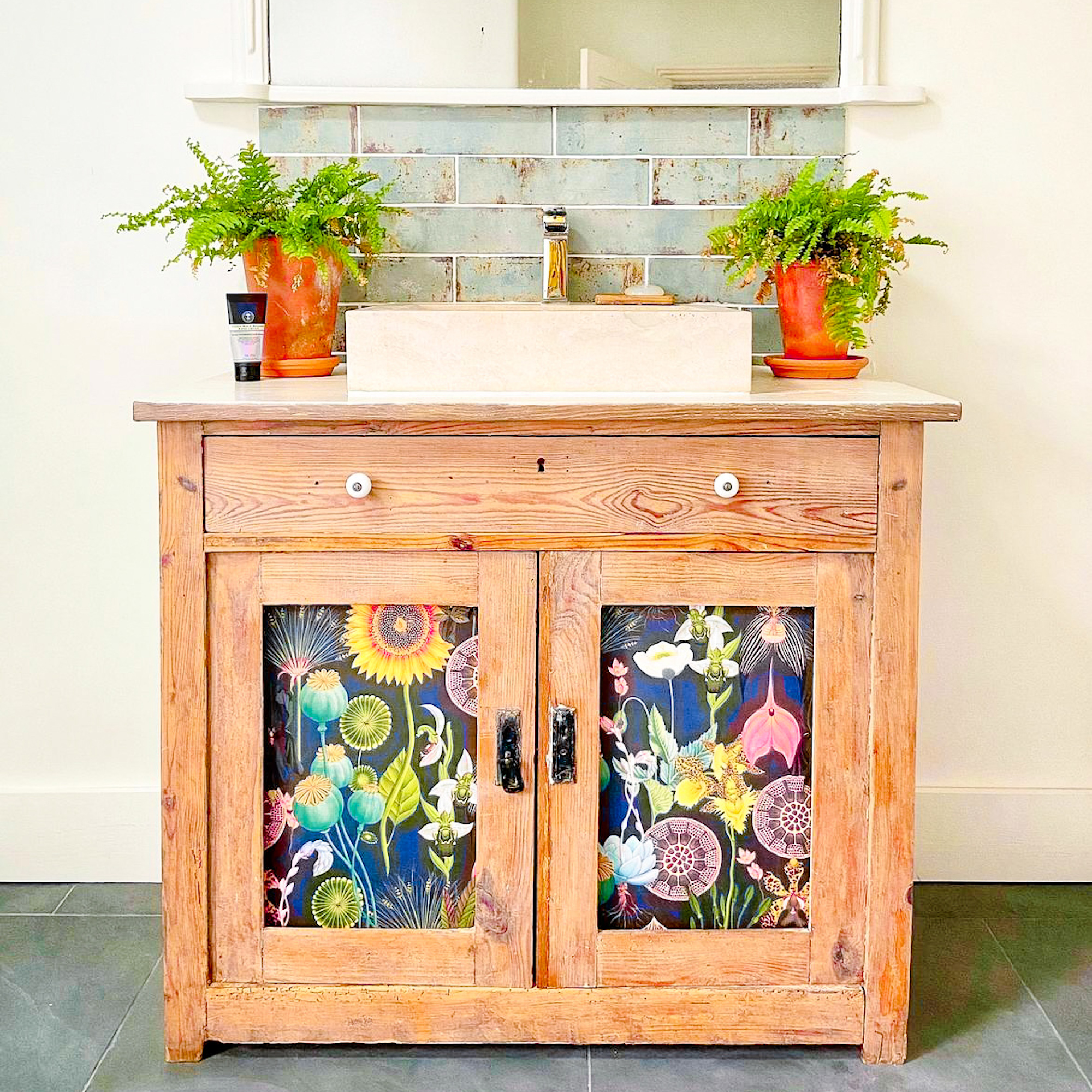
Learning how to shop your home is a life skill with the potential to save you a fortune. You may not have imagined repurposing would apply to bathrooms but there are one or two upcycled furniture ideas you should definitely try.
Storage units, especially space-saving or slimline cabinets can easily be rehomed in the bathroom, and if you’re handy with the tools, turning an unused cabinet, table or vintage washstand into a vanity unit can prove very rewarding.
‘This piece was made by repurposing an old unit I bought from a German flea market many years ago to create a vanity sink that is unique to my home,’ says Tanya Steinhauser, co-creative director at Festival of Thrift, who added brightly coloured wallpaper, a sit-on stone sink and new taps to give her old treasure a fresh lease of life.
‘Mixing old items and new bathroom items adds a bit more depth to the room and allows you to introduce a touch of personality to your space,’ she adds.
2. Choose second-hand
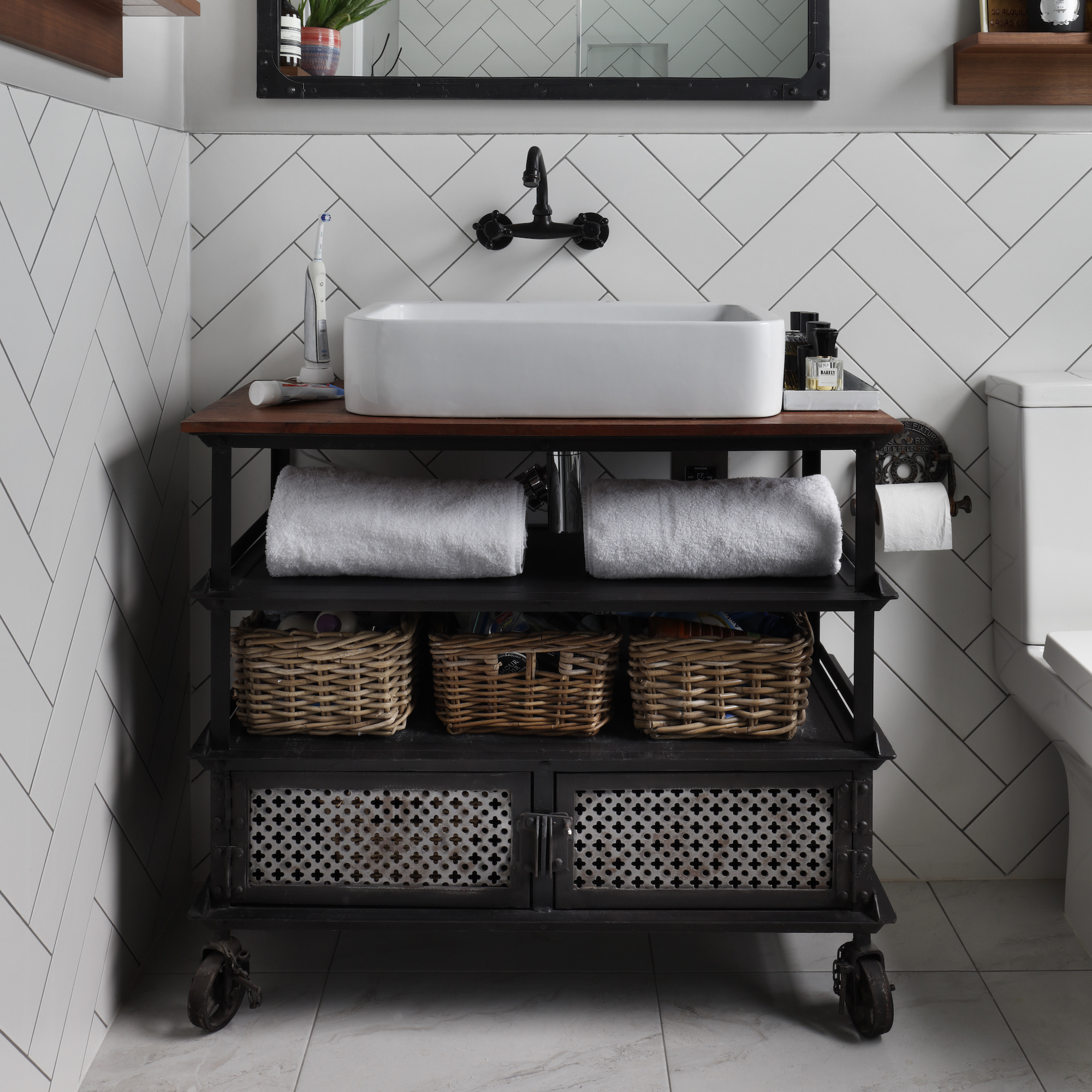
There’s no shame in making use of other people’s unwanted bathroom fittings when renovating, in fact it’s kinder for the planet as well as a brilliant budget bathroom idea. Tanya Steinhauser, co-creative director at Festival of Thrift, is a huge advocate of saving items from landfill rather than buying new. She recommends local selling sites, where you’ll often get items offered for free and don’t have to add in the cost of delivery or collection.
‘When renovating the bathroom in my own Edwardian house, which still had a 1970s bathroom when I moved in, I turned to some second-hand options like Facebook Marketplace,’ she says. ‘I managed to get a barely used stone sink for £20 with a short drive, as well as a free 1930s mirror that I painted to freshen it up.’
3. Shop the sales
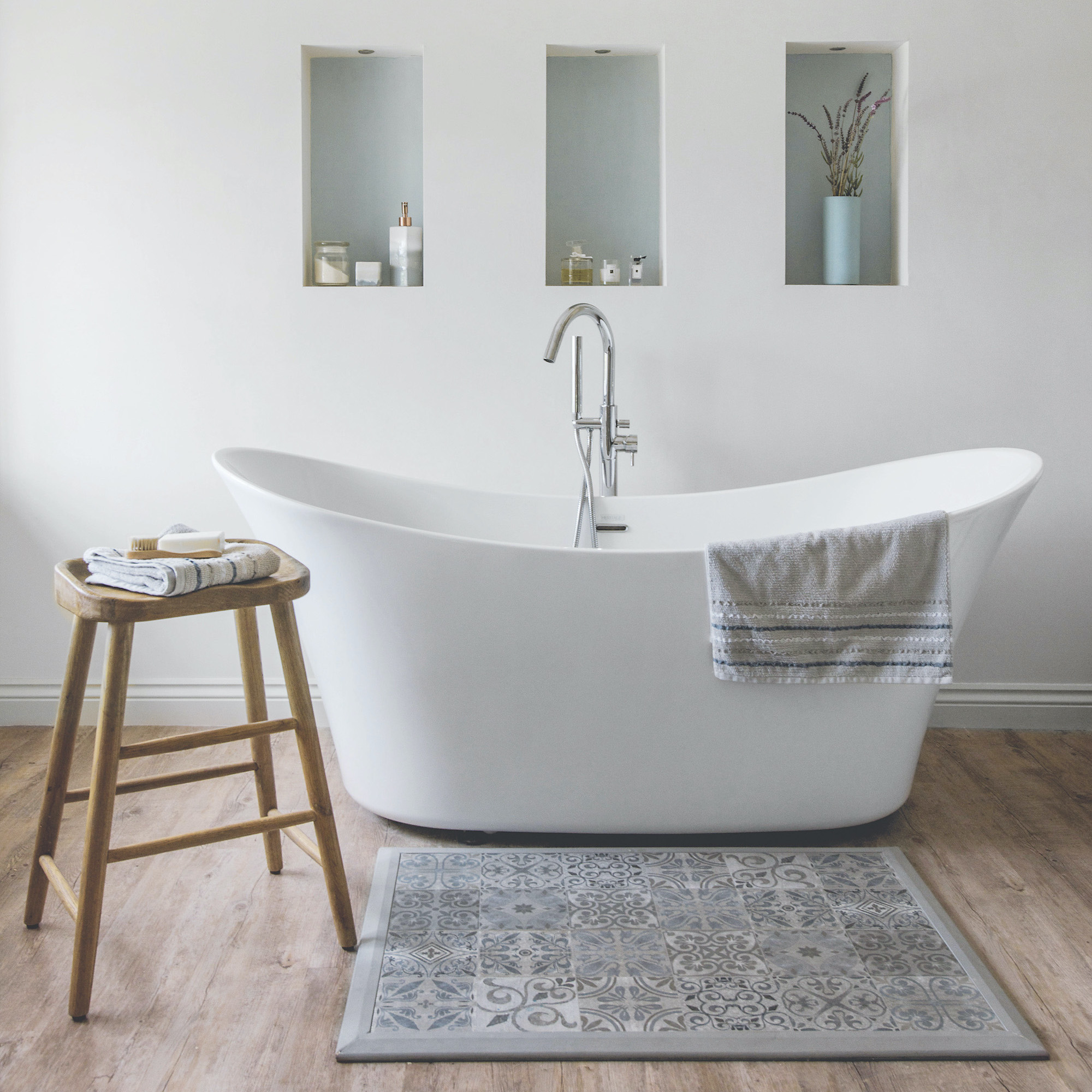
With so much competition in the bathroom industry, it’s always worth spending a little time bargain-hunting for special offers and deals. January is the Big One, but there’s usually substantial sales on around Bank Holiday weekends and Black Friday.
Some companies will price-match year-round, so if you’ve found bathroom fittings elsewhere for less, but want to reduce shipping costs by ordering from one place, it’s worth making a call to see if they will match it.
‘When buying new bathroom items look for combined offers, like two-for-one and percentage discounts on multibuys, as well as seasonal discounts. If you shop around there are often some large savings to be had,’ agrees Tanya.
4. Do it yourself

Certain bathroom renovation jobs are best left to the professionals – electrical work being the most obvious! While you may be able to turn your hand to plumbing, it’s worth noting any new plumbing work (i.e. not replacing like-for-like) may need building control approval.
However, that still leaves plenty of opportunities to save money by doing some of the building and decorating work yourself. Learning how to tile is a skill that can be self-taught with a little help from YouTube and, unless you buy very large or very thick tiles, you won’t need to invest in expensive tools. Painting is also a great DIY option that’s within most able people’s skillset.
The key to achieving professional results is to make sure you have the right tools and take the time to prep. ‘If you’re re-painting woodwork, for example, always begin by preparing the surfaces and use the correct sandpaper to ensure all old flaking paint is removed and the surfaces are smooth,’ says Nick Parsons, Head of Technical Development at Harris. ‘To achieve the best results, it’s important not to rush the process. Always use the recommended coats of paint. On bathroom woodwork this is usually a thin, even coat of primer, followed by at least two coats of paint to ensure full coverage and protect against moisture.’
5. Hire an interior designer
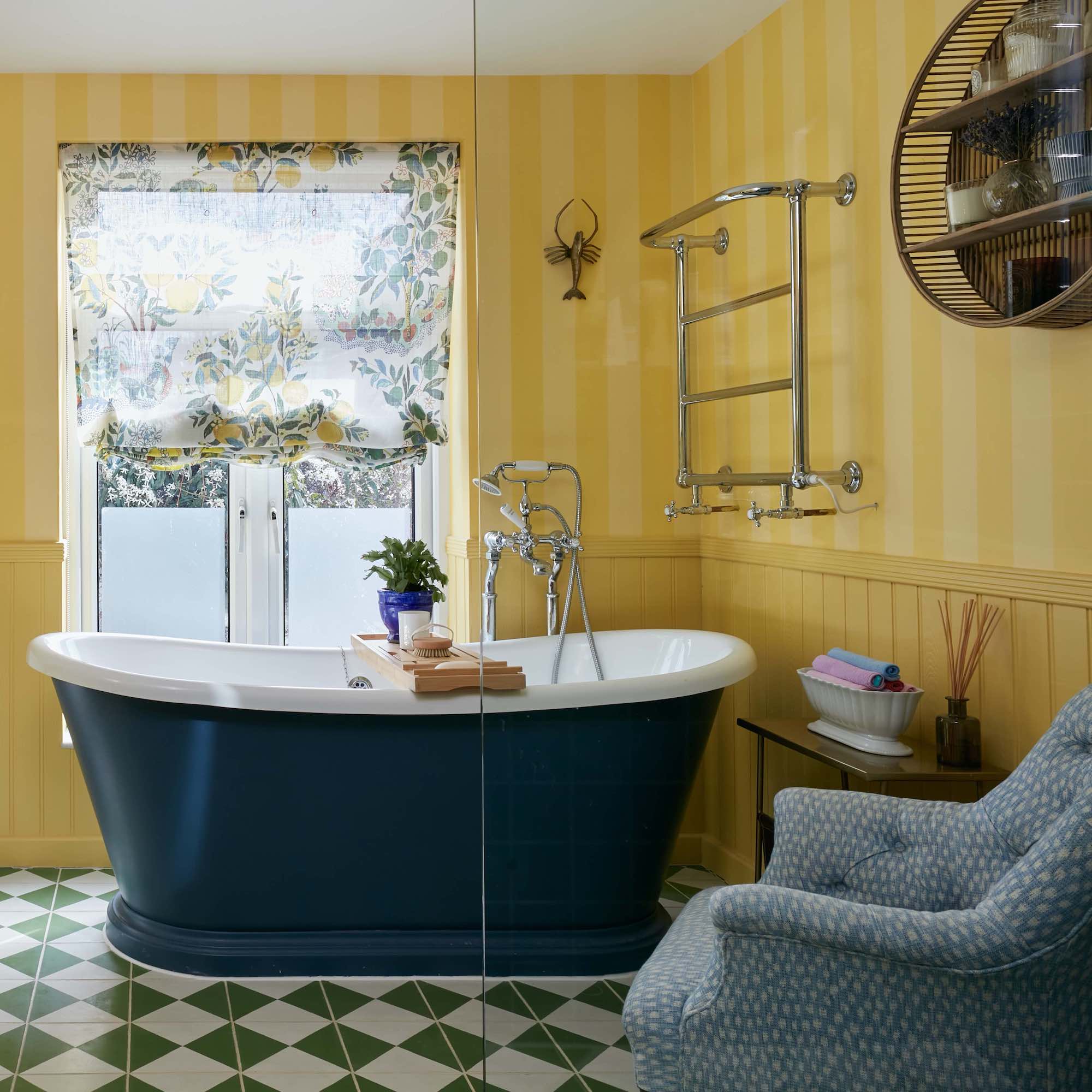
Hiring an interior designer might seem like something that’s exclusively for the seriously rich, and a luxury you cannot afford. Often the opposite is true and interior designers can save you money, especially if you’re a bit green on the reno front and lack design confidence.
‘A good interior designer will help your budget go a lot further and can offer advice on when to save and when to invest,’ says Dean Keyworth at Armstrong Keyworth. ‘If they are managing the project, they can also help it run quickly and smoothly, ultimately reducing labour costs by preventing unnecessary and expensive delays.’
While interior designers do (and should) charge for their time, their budgeting skills can offset the expense and you’ll end up with a far more upmarket look than you could ever have hoped to achieve alone. Depending on how they charge, some interior designers will pass along trade discounts on products, which can be as much as 40%.
6. Plan out your budget
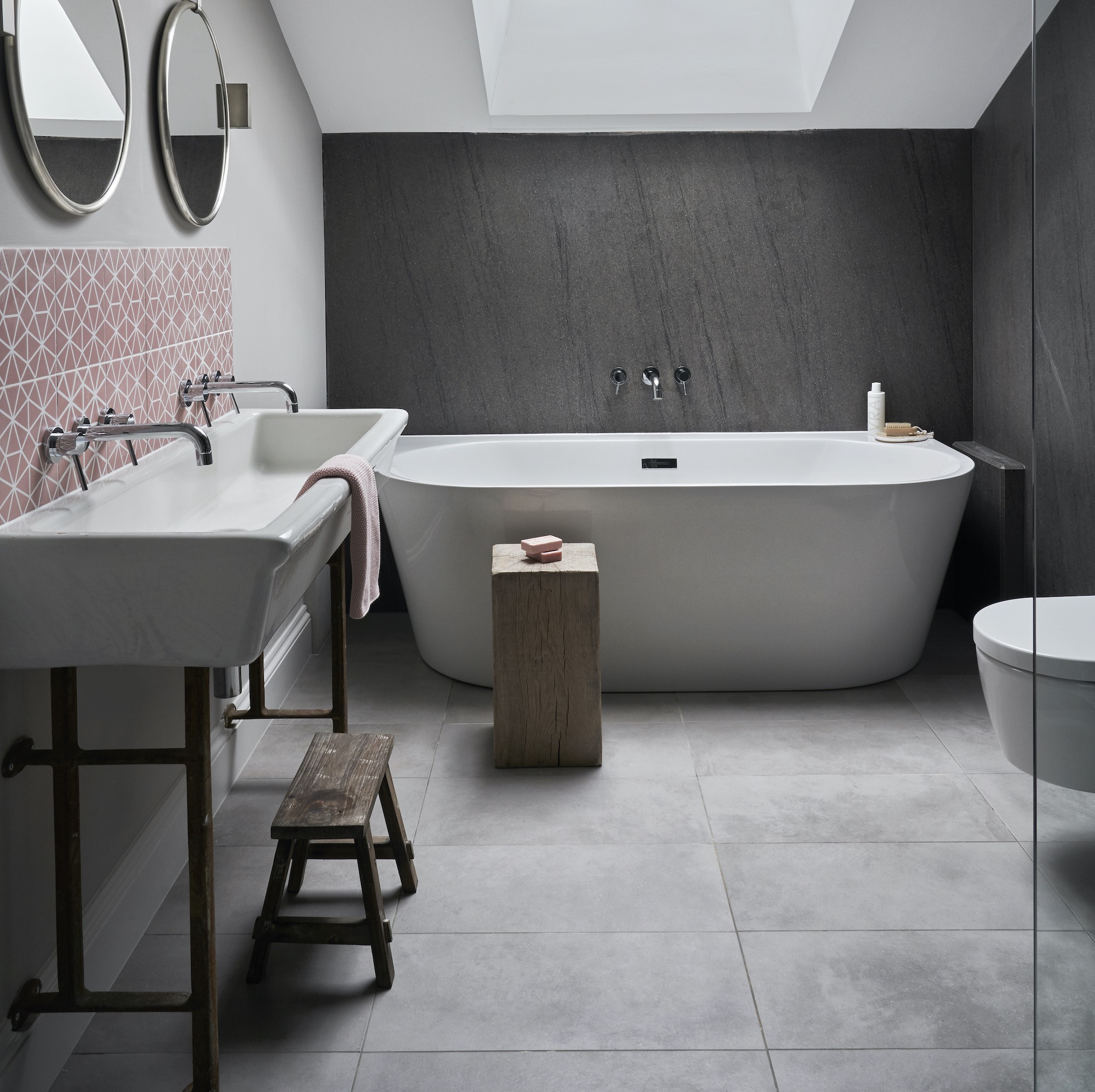
Planning a bathroom carefully is crucial to avoid costly mistakes and stop the budget running away with you. We’re not just talking about the obvious things, like a new suite and tiles; it’s often the hidden costs that will trip you up. We’re talking tanking behind the shower tiles, screeding the floor and new plasterboard.
‘Your budget should include a product list, building materials list, and anticipated labour costs. Don’t forget paint. Even if you’re painting the room yourself, a couple of tins of paint can add £100 to the bill,’ says Dean Keyworth. ‘By establishing a budget, you’ll be able to stay on track and make the right decisions as the project progresses.’
7. Find properly skilled trades
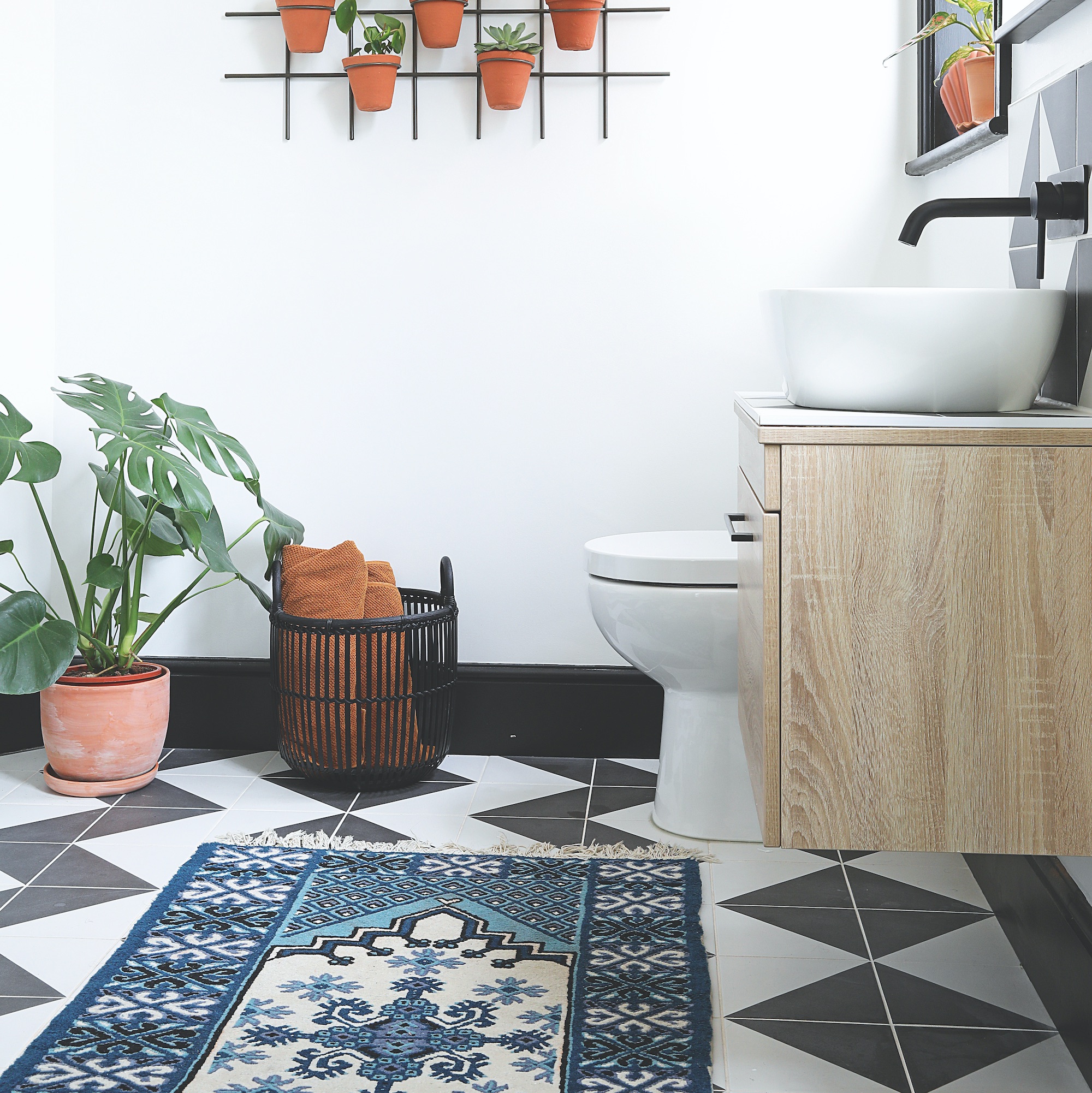
Choosing reliable builders and tradespeople can help prevent costly mistakes later down the line. Even if mistakes are unintentional, a lack of experience might mean you end up having to foot the bill for avoidable errors.
Without the right skills for the job, an initially cheap quote may end up costing far more than you bargained for. Good tradespeople often have the knowledge and experience to suggest cheaper ways of achieving the same results, without cutting corners, too.
‘Always choose tradespeople based on personal recommendations, not price,’ advises Dean Keyworth. ‘And do check their work in person if the recommendation isn’t from someone you know and trust. Be prepared to wait for a decent one, there’s a good reason they’re busy!’
8. Save on tiles
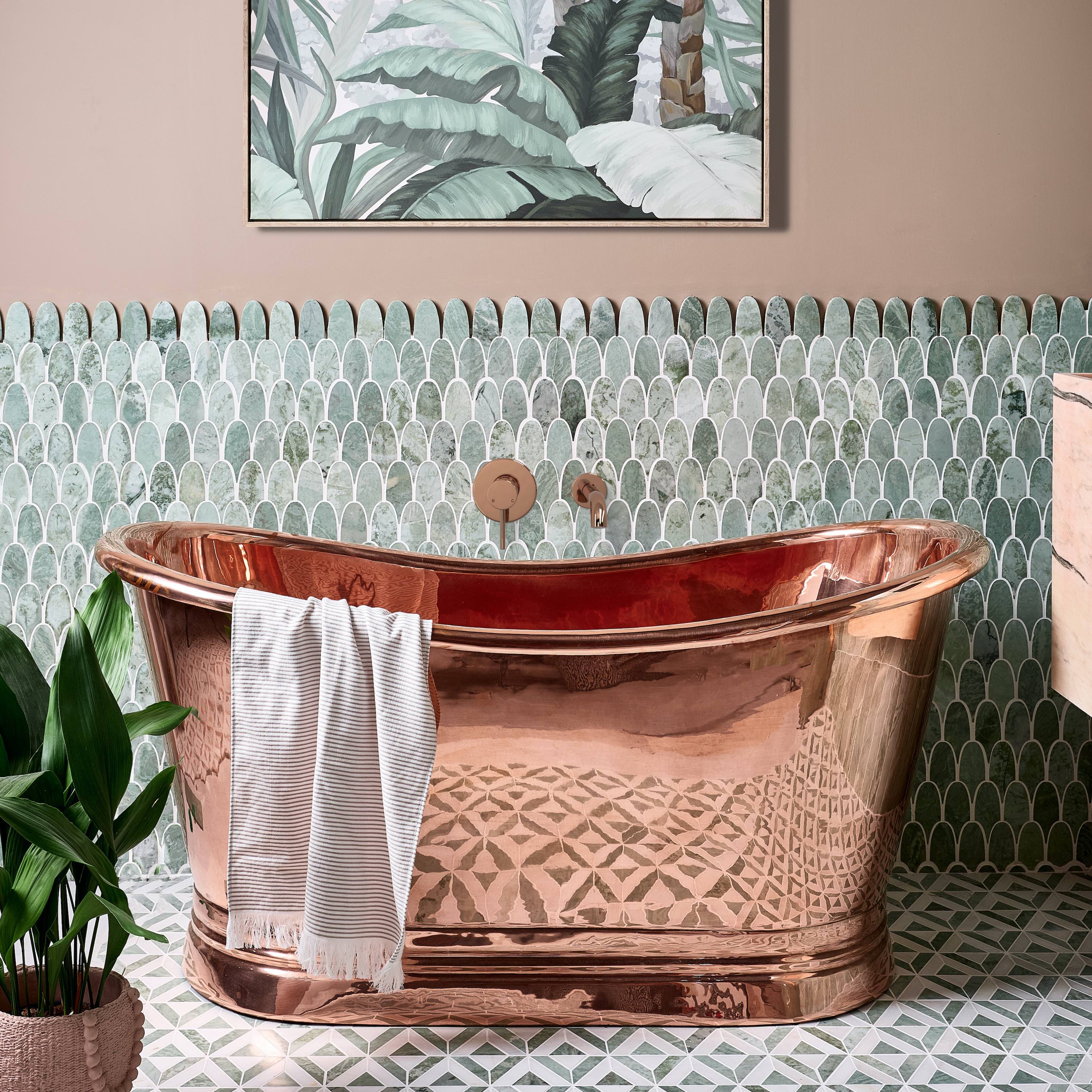
Less is more when it comes to bathroom tile ideas, and not just because it can potentially save you hundreds of pounds at the tile store. Too many tiles can result in a cold, unwelcoming bathroom that’s literally full of hard surfaces. The old habit of tiling from floor-to-ceiling was often done out of a necessity to solve dampness issues. Now that modern bathrooms are effectively ventilated, by law, tiling every surface is no longer necessary.
‘Unless it’s a wet room, not every inch of your bathroom walls must be tiled. Instead, look to concentrate on the main splash areas, such as inside a shower, behind the bath and behind the sink area,’ says Grazzi Wilson, Creative Lead at Ca’ Pietra.
9. Stick with the same layout
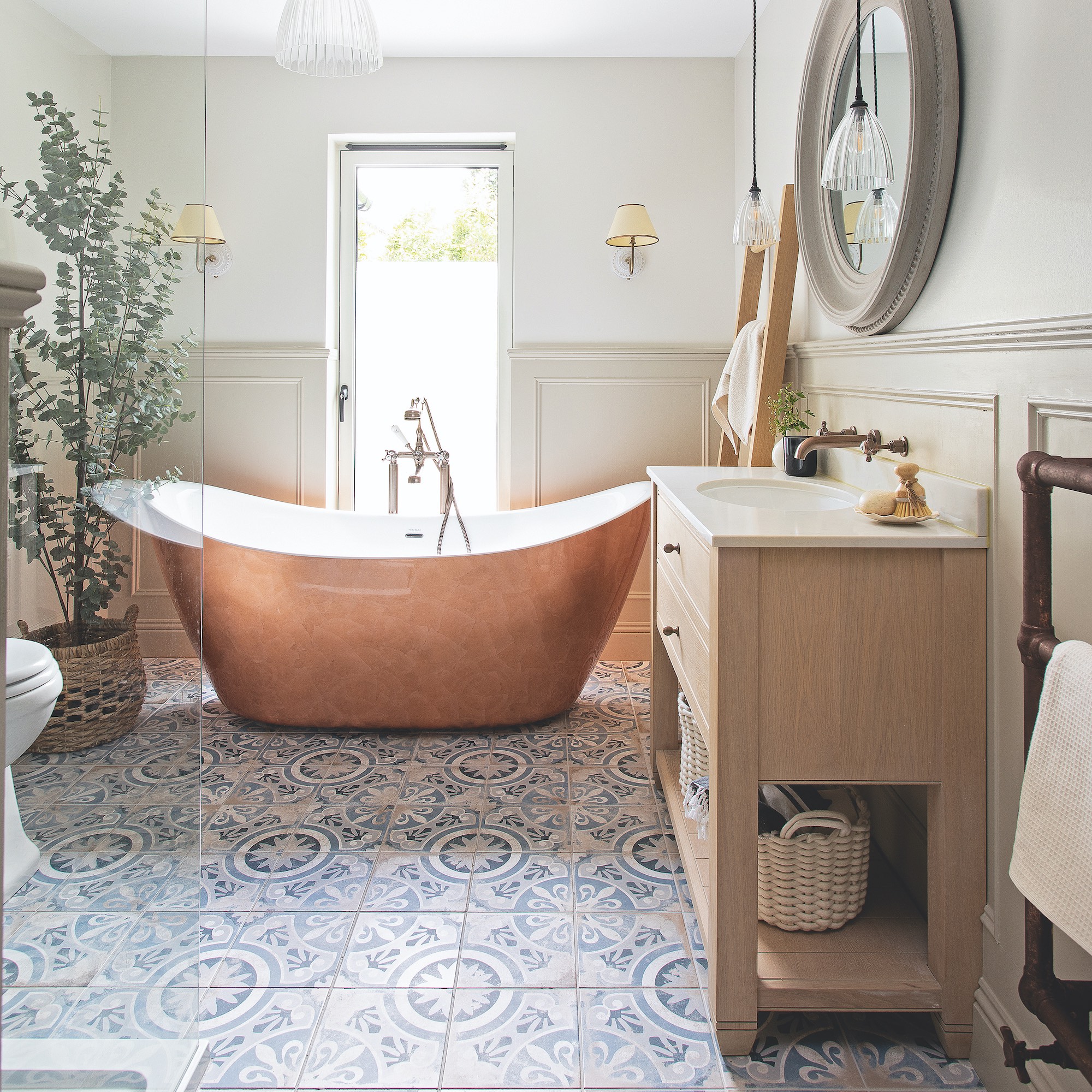
With the day-rate for a builder averaging £200+, anything you can do to speed up the project will result in big savings. ‘Keeping the bathroom layout roughly the same is one of the best ways to keep control of labour costs,’ says Andy Simms, a bathroom renovation expert from MyBuilder.com.
‘Moving doorways, windows, and piping can all dramatically increase the costs of both materials and labour,’ adds Andy. ‘Always bear in mind that the more walls that contain plumbing pipes, the more work will be involved, so if you are planning new plumbing, you can save by limiting plumbing fixtures to one wall. Load-bearing walls are also a lot more expensive to alter or move than stud walls, so leave them alone if you’re on a tight budget.’
10. Go for faux alternatives
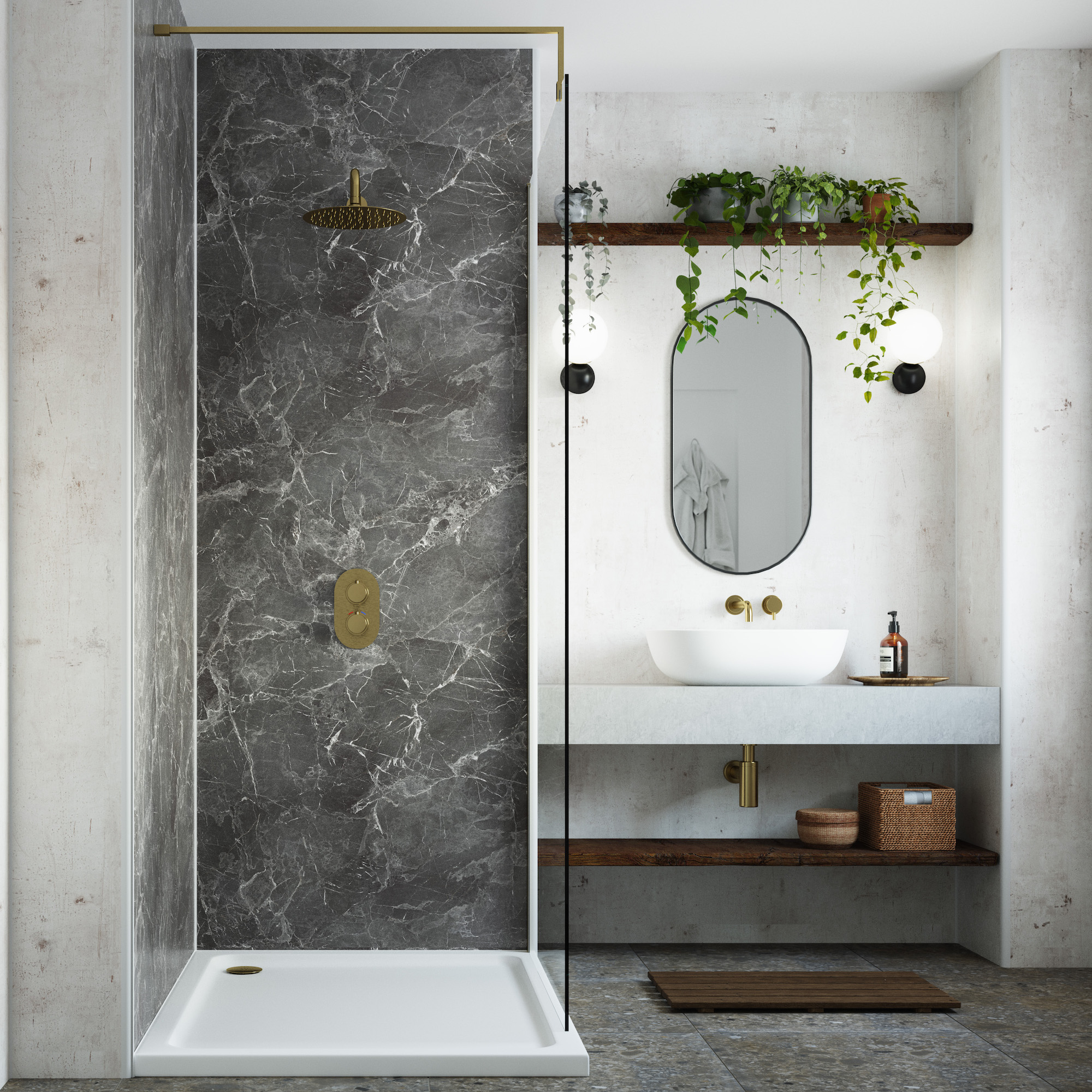
You can also boost your bathroom budget by seeking out faux alternatives to designer materials. For example, handmade zellige tiles are a big trend but you can get similar designs in porcelain for far less. ‘
'When it comes to which tiles to choose, ceramic tends to be the cheapest option, followed by porcelain and then natural stone which can be very expensive,’ says Grazzie Wilson at Ca’ Pietra. ‘Luckily there are now some very credible marble and stone-look alternatives that will appear just as luxurious as the real deal and are easier to clean and maintain, too.’
Also consider waterproof wall panels, like these Mermaid Panels, which are available in some truly beautiful imitations of natural materials and, again, are designed to effortlessly cope with the humidity levels in a bathroom.
FAQs
How much should I budget for a bathroom UK?
Budgeting for a new bathroom can be hard to pinpoint with accuracy, mainly due to the wide discrepancies between different regions in the country, but also because demand can dramatically affect costs. Labour is one of the biggest portions of any bathroom budget, and if all the tradespeople in your area are mega busy, you might find yourself paying more than expected for good work. The cost of building materials are also rising, especially those that are in high demand.
That said, mybuilder.com has its ears to the ground on the subject and has tapped its members up to create a really useful guide that breaks down all the various costs you might anticipate. Their overall guestimate is between £5,000-£10,000, which is quite a wide ballpark, but you can also get more specific costings here.
How can I save money on a bathroom refit
We’ve already ticked off many of the main ways you can save money on a bathroom refit but we’ve missed the biggest point – you can save by avoiding refitting your bathroom altogether.
This approach won’t work if your current fittings are leaking, damaged or otherwise unsafe. But if they’re perfectly functional, conform to modern safety standards, and are arranged in a way that is not dangerous (or toe-stubbing on a regular basis), stick with the fittings you’ve got and just give the room a light glow up.
Repaint, add some Art, refresh your linens – get some tile stickers if the current tiles are desperate – you’ll be amazed at what can be achieved on a shoestring if you avoid those big-ticket spends.







